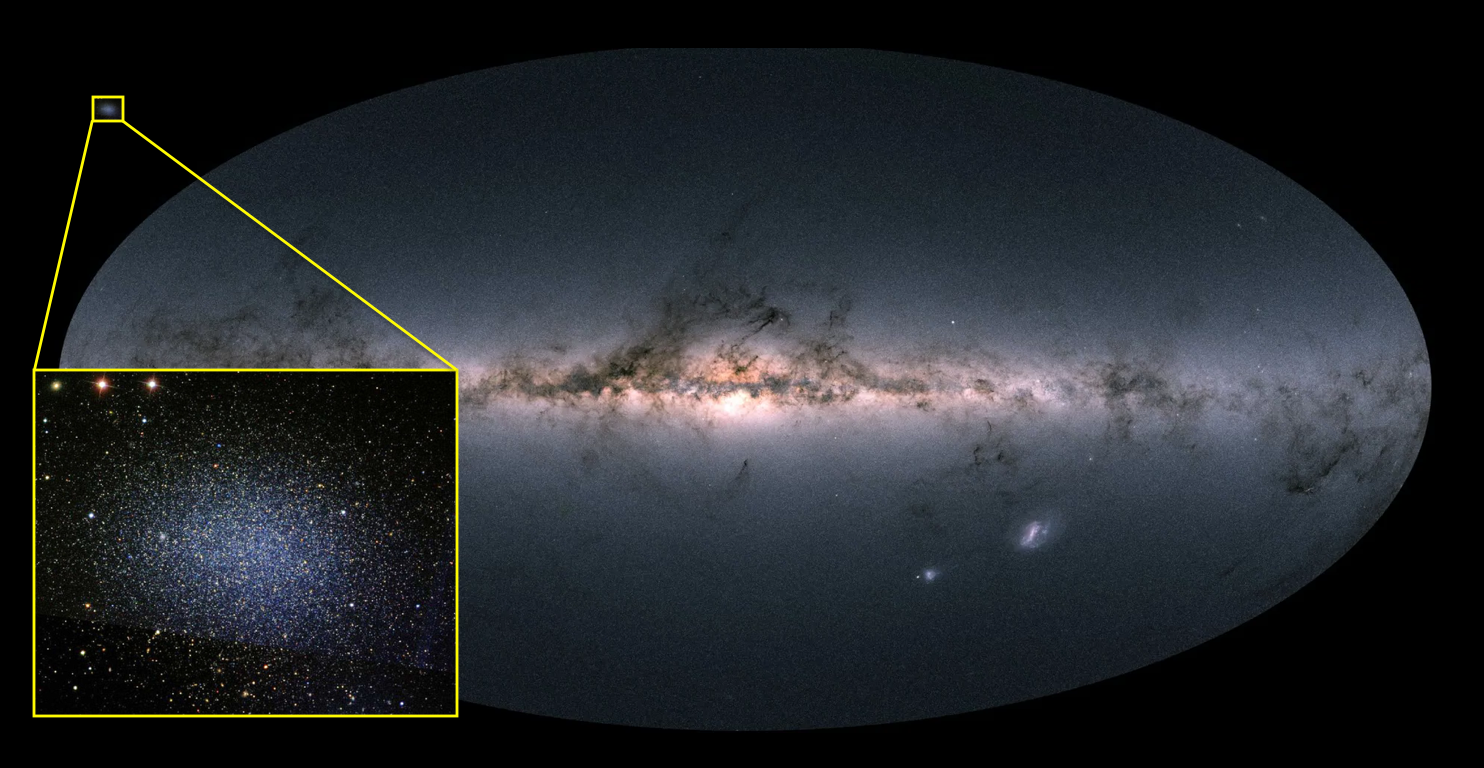An extraordinarily massive black hole at the center of one of the Milky Way’s dwarf satellite galaxies called Leo I has been identified by astronomers at The University of Texas at Austin’s McDonald Observatory.
 Milky Way and Satellite Galaxy Leo I (Image Credit: The University of Texas at Austin’s McDonald Observatory).
Milky Way and Satellite Galaxy Leo I (Image Credit: The University of Texas at Austin’s McDonald Observatory).
Nearly as enormous as the black hole in the earth’s galaxy, the finding could change one’s understanding of how all galaxies — the building blocks of the universe — form. The study has been published in the latest issue of The Astrophysical Journal.
The astronomers planned to explore Leo I due to its uniqueness. Unlike the majority of dwarf galaxies orbiting the Milky Way, Leo I does not have much dark matter. Scientists analyzed Leo I’s dark matter profile — that is, how the density of dark matter varies from the outer edges of the galaxy straight into its center. They did this by computing its gravitational pull on the stars: when the stars travel faster, more matter is enclosed in their orbits.
The researchers were keen to know whether dark matter density expands toward the center of the galaxy. They were also interested to know if their profile measurement would match earlier ones done using older telescope data integrated with computer models.
Headed by recent UT Austin doctoral graduate María José Bustamante, the researchers include UT astronomers Eva Noyola, Karl Gebhardt and Greg Zeimann, as well as colleagues from Germany’s Max Planck Institute for Extraterrestrial Physics (MPE).
To carry out their observations, they used a novel instrument known as VIRUS-W on McDonald Observatory’s 2.7-meter Harlan J. Smith Telescope.
When the researchers fed their upgraded data and advanced models into a supercomputer at UT Austin’s Texas Advanced Computing Center, they acquired a surprising result.
The models are screaming that you need a black hole at the center; you don’t really need a lot of dark matter. You have a very small galaxy that is falling into the Milky Way, and its black hole is about as massive as the Milky Way’s. The mass ratio is absolutely huge. The Milky Way is dominant; the Leo I black hole is almost comparable.
Karl Gebhardt, astronomer, McDonald Observatory, The University of Texas at Austin
The result is unparalleled.
The team said the result was unlike the past studies of Leo I because of a combination of improved data and supercomputer simulations. The central, dense area of the galaxy was generally unmapped in previous studies, which focused on the velocities of separate stars.
The present study demonstrated that for those few velocities that were captured in the past, there was a predisposition toward low velocities. This lowered the inferred amount of matter enclosed within their orbits.
The new data is focused on the central region and is untouched by this predisposition. The amount of inferred matter enclosed within the stars’ orbits rose steeply.
The finding could revolutionize astronomers’ insight into galaxy evolution.
There is no explanation for this kind of black hole in dwarf spheroidal galaxies.
María José Bustamante, Study Lead and (former) Doctoral Graduate, McDonald Observatory, The University of Texas at Austin
The finding is all the more significant as astronomers have observed galaxies such as Leo I, referred to as “dwarf spheroidal galaxies,” for two decades to understand how dark matter is dispersed within galaxies, Gebhardt added. This new kind of black hole merger also provides gravitational wave observatories a new signal to hunt for.
If the mass of Leo I’s black hole is high, that may explain how black holes grow in massive galaxies.
Karl Gebhardt, astronomer, McDonald Observatory, The University of Texas at Austin
The reason for this is because over time, as small galaxies such as Leo I fall into larger galaxies, the smaller galaxy’s black hole joins with that of the larger galaxy, thereby expanding its mass.
Developed by a team at MPE in Germany, VIRUS-W is the only instrument in the world currently that can carry out this type of dark matter profile research. Noyola highlighted that a number of southern hemisphere dwarf galaxies are ideal targets for it, but no southern hemisphere telescope is prepared for it.
However, the Giant Magellan Telescope (GMT) currently under construction in Chile was, in part, engineered for this type of exploration. UT Austin is a founding partner of the GMT.
Journal Reference:
Bustamante-Rosell, M. J., et al. (2021) Dynamical Analysis of the Dark Matter and Central Black Hole Mass in the Dwarf Spheroidal Leo I. The Astrophysical Journal. doi.org/10.3847/1538-4357/ac0c79.